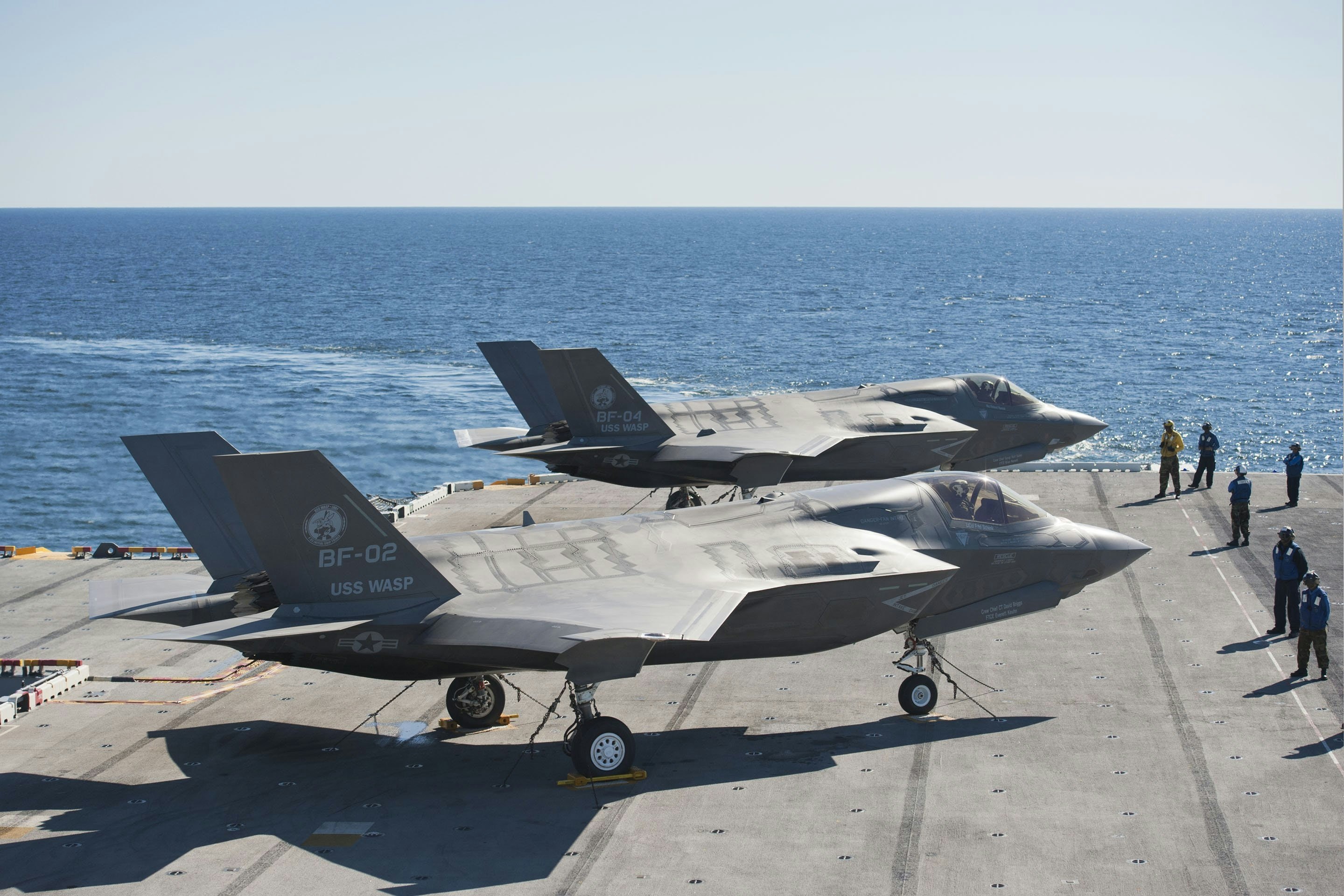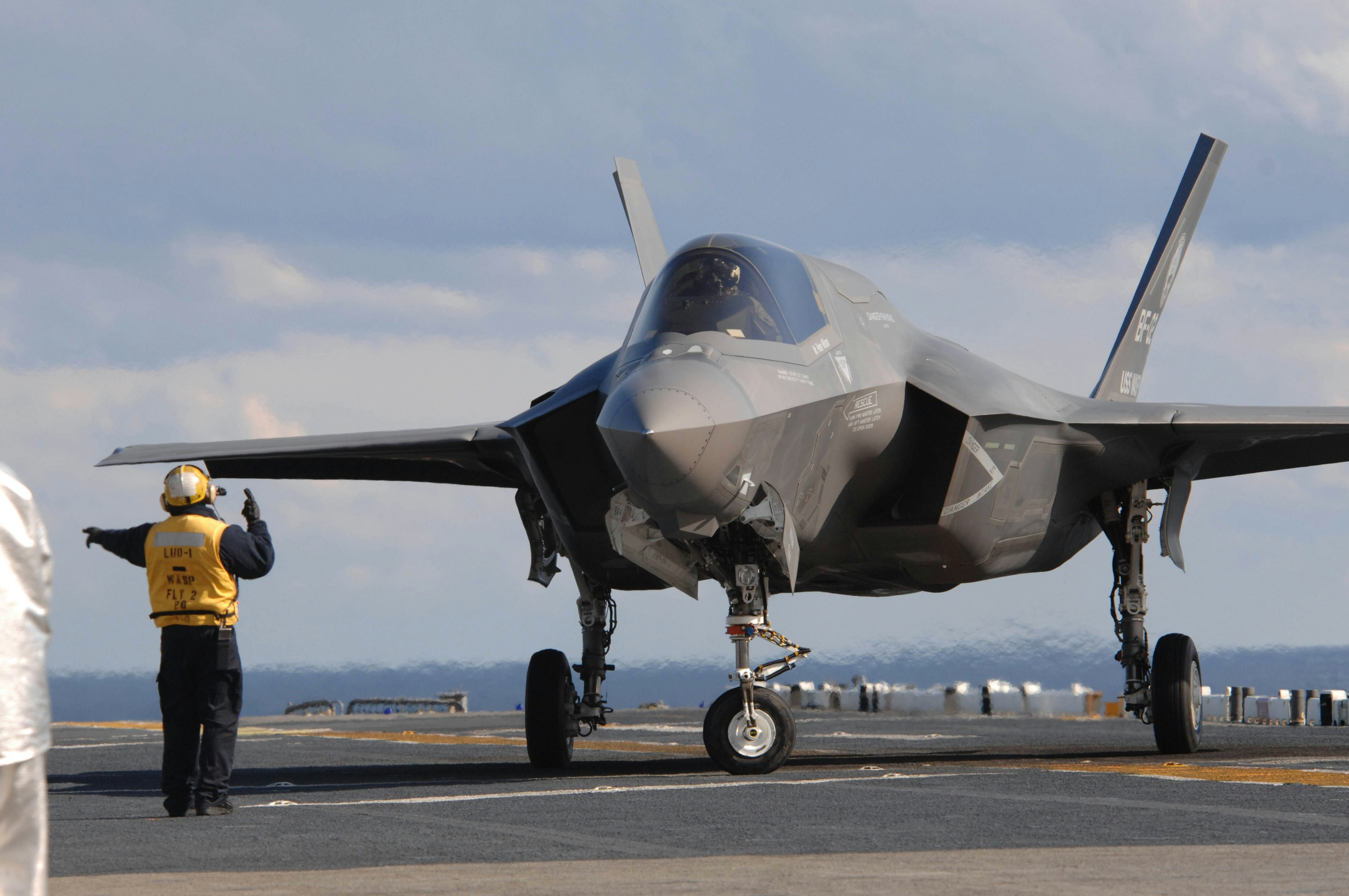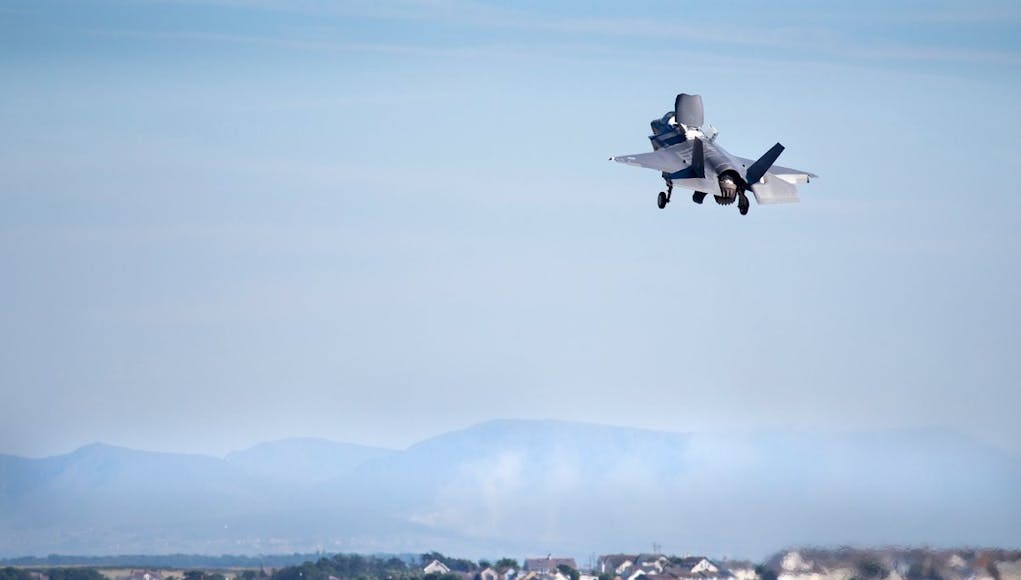The future of Royal Air Force and Royal Navy air power, the F-35, has visited the home of UK advanced fighter pilot training.
First visit of RAF F-35 to RAF Valley – 5th Gen Air Power for the RAF and RN at the home of UK advanced fighter pilot training: https://t.co/fQBxueHCIq @RAFValleyStnCdr @AngleseyScMedia @Boss4Sqn @OC617Sqn @RoyalAirForce @RoyalNavy @UKDefJournal @AirSeaRescue @Chf_Eng_Air pic.twitter.com/Q2lc5aHHad
— RAF Valley MCO (@RAFVALLEYMCO) July 3, 2018
The 617 Squadron aircraft flew an F-35B to Valley from RAF Marham to RAF Valley for the first time. Lightning Force Commander Air Commodore David Bradshaw said when 617 was recently reformed:
“This is a most momentous day for the UK Lightning Force as we celebrate the reformation of 617 Squadron. Manned by highly capable Royal Air Force and Royal Navy personnel and equipped with the truly remarkable F-35B Lightning, 617 Squadron will once again provide potent, flexible Air Power for the nation.
In a simple yet highly significant ceremony held in the heart of Washington DC amongst friends and colleagues as part of celebrations for RAF100, the famous Dambusters marked the start of another exciting chapter in their Squadron’s proud history. I very much look forward to welcoming 617 Squadron home to RAF Marham this summer as they prepare for operational service from land and sea.”
Today’s 617 Squadron, currently training with the UK’s F-35B Lightning jets, moved to the UK with a number of aircraft to their new home at RAF Marham this Summer. Like their predecessors they will be operating at the forefront of aircraft technology. The aircraft will be jointly operated by the Royal Air Force and the Royal Navy and have the ability to operate from land and sea, forming an integral part of Carrier Strike operating from the Queen Elizabeth Class aircraft carriers.
The 15th F-35B for the UK, ZM149, recently flew from Lockheed Martin’s Fort Worth facility for a test flight. Numbers right now are exactly where they’re expected to be and inline with the 2015 Strategic Defence and Security Review.
2 F-35B in LRIP run 3, 1 F-35B in LRIP run 4, 1 F-35B in LRIP run 7, 4 F-35B in LRIP run 8, 6 F-35B in LRIP run 9, 3 F-35B in LRIP run 10, 2 F-35B in LRIP run 11, 2 F-35B in LRIP run 12
6 F-35B in LRIP run 13, 8 F-35B in LRIP run 14 and 7 F-35B in LRIP run 15. This brings us to 42 in 2023.
The next run brings us to the total of the first batch of aircraft, 48.
It is hoped that 138 F-35 aircraft will have been delivered by the 2030s. Around 2023, the Ministry of Defence have indicated that the UK will have 42 F-35 aircraft with 24 available as ‘front-line fighters’ and the remaining 18 will be used for training (at least 4-5 on the OCU), be in reserve or in maintenance.
As the only level one partner on the F-35 programme, the UK has been working closely with the US from the outset. UK industry will provide approximately 15% by value of each F-35 to be built, which are due to total more than 3000 in number. The programme has already generated $12.9Bn worth of orders for the UK and at peak production the programme will support over 24,000 jobs in the UK.
Run up to jets on-board
HMS Queen Elizabeth is expected to start fixed-wing flight trials with three or more F-35Bs off the eastern coast of the US around September this year. A fantastic info-graphic created by SaveTheRoyalNavy can be found here and details the timeline of the programme.
In order to prepare for operating from HMS Queen Elizabeth, Royal Navy sailors have also trained alongside their US Navy counterparts on the flight deck of the amphibious assault ship USS Wasp. Last year, the Royal Navy sent six Sailors to integrate into Wasp’s flight deck operations to prepare them for their upcoming Queen Elizabeth class aircraft carriers.

Royal Navy sailor Richard Clark said:
“Living with one another is good for integration, so when we work together, when we have your aircraft come to our flight decks, and vice versa, we’ll have a bit more awareness of how we each operate. It helps us work with you better on different platforms when we need to. This is the first group of guys who are not 1st Classes. Some of them have never been on a ship before, so for the younger guys, it’s good for them to get experience.”
Recent F-35 trials aboard the USS Wasp weren’t just an operational test for the United States Marine Corps, with much of the data produced being used to inform the USMC’s declaration of initial operating capability but also for the United Kingdom. UK personnel were fully embedded in the USS Wasp trials and will use the data gathered from this event, future trials and operational deployments to support the UK’s flying trials aboard HMS Queen Elizabeth off the US coast in Spring next year.

British F-35 pilots also recently embarked on the USS America for at-sea developmental testing phase 3 (known as DT), the last trial that paves the way for the US Marine Corps to deploy the jet operationally on amphibious assault ships. BAE Systems test pilot Pete Wilson said about the upcoming trials on the HMS Queen Elizabeth:
“This will not be a DT phase. Testing on the Queen Elizabeth will be like DTs 1, 2 and 3 combined. We don’t need to use fully instrumented aircraft; we already understand most of the loads on the aircraft systems, as we have tested that during earlier tests.”
HMS Prince of Wales will take over F-35 trials to allow HMS Queen Elizabeth to return to dock for her routine re-certification work.
Former Captain of the vessel Ian Groom told media that HMS Prince of Wales will need to be delivered during 2019 to allow flight trails to continue whilst Queen Elizabeth is undergoing inspection in dry dock. Quoted in Janes, Groom said:
“There is a further set of fixed-wing flying trials needed and HMS Prince of Wales has to carry them out. HMS Queen Elizabeth’s re-certification period in 2019 means we need HMS Prince of Wales then.”














The 617 Squadron aircraft flew an F-35B to Valley from RAF Marham to RAF Valley for the first time
Yep – that is a bit strange, I thought an F-35 would have piloted by, say, a pilot, not an aircraft.
Also, I would have thought he would have just gone from RAF Marham, to RAF Valley and been done with it.
Might the comment about not needing fully instrumented aircraft be interpreted as the QE bringing a few of her own? That would be a sight!
Happy Dog Eyed American Colonial Rebellion Day!
😀
Could well be.
Happy Colonial Day
Excellent article and relevant to this subject.
https://www.usni.org/magazines/proceedings/2018-07/carrier%E2%80%99s-role-narrowing
Cheers!
Interesting article thanks. The author didn’t really make the case that a carriers role is narrowing as expressed in the title but the points on lack of innovation and creative thinking resonate with me together with a perception of complacency that what has worked in the past will continue in the future.
If we take no other lesson away from Iraq it should be that adversaries who cannot match us, in whatever field of defence, will pursue asymmetric solutions and a failure to anticipate and develop counters will be at our peril as ground troops in Iraq found to their cost. One comment in particular highlighted the risk of a carrier group being overwhelmed by a swarm attack of relatively low cost anti-ship cruise missiles such as NSM, just because the group will not have enough missiles across the fleet to take out all the attacking missiles.
That’s why I think the QEs are badly under armed. The USN carriers all have medium ranged ESSM sams, short ranged RAM sams & Phalanx CIWS. The QEs have only the Phalanx, the miniguns & 30mm are innefective v ASMs & Phalanx may not stop even the missiles it hits before big chunks strike the ship. We should consider fitting Aster 15 &/or SeaCeptor to take out most at safer ranges. The spin says the escorts will deal with them, but in reality carriers are sometimes caught without sufficient escorts & should be equipped for that. Spin has zero effect v air or ASM attacks.